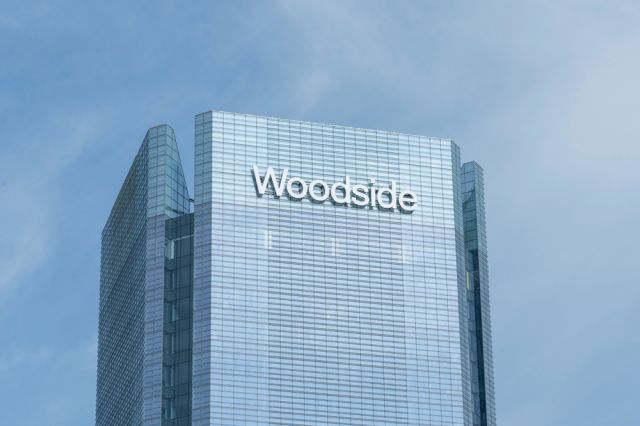
Woodside’s CEO Meg O’Neill said the acquisition supports Woodside’s strategy to thrive through the energy transition. (Source: Shutterstock)
Australia’s Woodside is positioning itself for a growing lower-carbon ammonia market, with signing a binding agreement to buy OCI NV’s project in Beaumont, Texas, in a cash deal for $2.35 billion.
The project by OCI Clean Ammonia Holding BV, which is under construction, has targeted first ammonia production in 2025 and lower-carbon ammonia in 2026. Woodside’s deal includes capex for the project through OCI’s Phase 1 completion.
Under the transaction, Woodside will acquire 100% of the equity of OCI Clean Ammonia Holding BV, which indirectly wholly owns the project, from OCI NV.
The project is subject to cost, schedule and performance guarantees from OCI. This means that OCI will manage the construction of the project through provisional acceptance, will fund project costs through project completion and has agreed to liquidated damages for certain delays, reducing cost and schedule risk.
The transaction includes the transfer of experienced personnel with start-up, operational, maintenance and technical capabilities for the operation of the asset.
The transaction is targeted to complete in the second-half of 2024 and is subject to OCI’s shareholder vote and satisfaction of customary conditions precedent.
Woodside’s CEO Meg O’Neill said the acquisition supports Woodside’s strategy to thrive through the energy transition.
“This transaction positions Woodside in the growing lower carbon ammonia market. The potential applications for lower carbon ammonia are in power generation, marine fuels and as an industrial feedstock, as it displaces higher-emitting fuels,” O’Neill said. “Global ammonia demand is forecast to double by 2050, with lower carbon ammonia making up nearly two-thirds of total demand.”
The project exceeds Woodside’s capital allocations targeting new energy projects. Both phases are expected to achieve an IRR above 10% with payback of less than 10 years.
O’Neill said this acquisition is a material step towards delivering Woodside’s Scope 3 investment and abatement targets.
“Phase 1 has the capacity to abate 1.6 mtpa [million tonnes per annum] of CO2-e and with the addition of Phase 2, the project has the capacity to abate 3.2 mtpa CO2-e, or over 60 percent of our Scope 3 abatement target,” O’Neill said.
The project is located on the U.S. Gulf Coast and can serve customers domestically and internationally. Phase 1 has a design capacity of 1.1 mtpa. It’s lower-carbon ammonia production, derived from natural gas paired with carbon sequestration, is targeted for 2026 following commencement of carbon capture and sequestration (CCS) operations, Woodside said.
Woodside said that agreements for the feedstock and CCS capacity are in place. The nitrogen and lower carbon hydrogen feedstock will be sourced primarily from Linde. The Linde feedstock facility is currently under construction, targeting completion in early 2026. Ahead of completion, early supply of feedstock for the project will come from multiple suppliers, including Linde, from available capacity in the Gulf Coast.
The CCS services will be provided to Linde by Exxon Mobil and are expected to be available in 2026.
The project aims to target conventional ammonia customers at start-up and will target lower carbon ammonia customers in Europe and Asia when CCS is operational.
The facility is designed to accommodate a second 1.1 mtpa production train in Phase 2. The second phase remains in pre-final investment decision (FID). Woodside will target FID-readiness for Phase 2 in 2026 with an expected gross capex ranging between $1.2 billion and $1.4 billion.
The ammonia plan would be the first plant paired with auto thermal reforming with 95%+ CO2 capture. Early-mover advantage in the growing lower carbon ammonia market;
Phase 1 is expected to exceed Woodside’s capital allocation target of a 10% IRR for new energy projects, including acquisition and construction costs. It is also expected to achieve payback in less than 10 years. Phase 2 is expected to achieve improved returns leveraging common infrastructure.
Recommended Reading
BlackRock CEO: US Headed for More Inflation in Short Term
2025-03-11 - AI is likely to cause a period of deflation, Larry Fink, founder and CEO of the investment giant BlackRock, said at CERAWeek.
Stonepeak Backs Longview for Electric Transmission Projects
2025-03-24 - Newly formed Longview Infrastructure will partner with Stonepeak as electric demand increases from data centers and U.S. electrification efforts.
Michael Hillebrand Appointed Chairman of IPAA
2025-01-28 - Oil and gas executive Michael Hillebrand has been appointed chairman of the Independent Petroleum Association of America’s board of directors for a two-year term.
What's Affecting Oil Prices This Week? (Feb. 3, 2025)
2025-02-03 - The Trump administration announced a 10% tariff on Canadian crude exports, but Stratas Advisors does not think the tariffs will have any material impact on Canadian oil production or exports to the U.S.
Trump Nominates E&P Advocate Sgamma to Head Bureau of Land Management
2025-02-12 - If confirmed by the Senate, Kathleen Sgamma, president of the Western Energy Alliance, would oversee management of approximately 245 million acres of surface lands.
Comments
Add new comment
This conversation is moderated according to Hart Energy community rules. Please read the rules before joining the discussion. If you’re experiencing any technical problems, please contact our customer care team.





